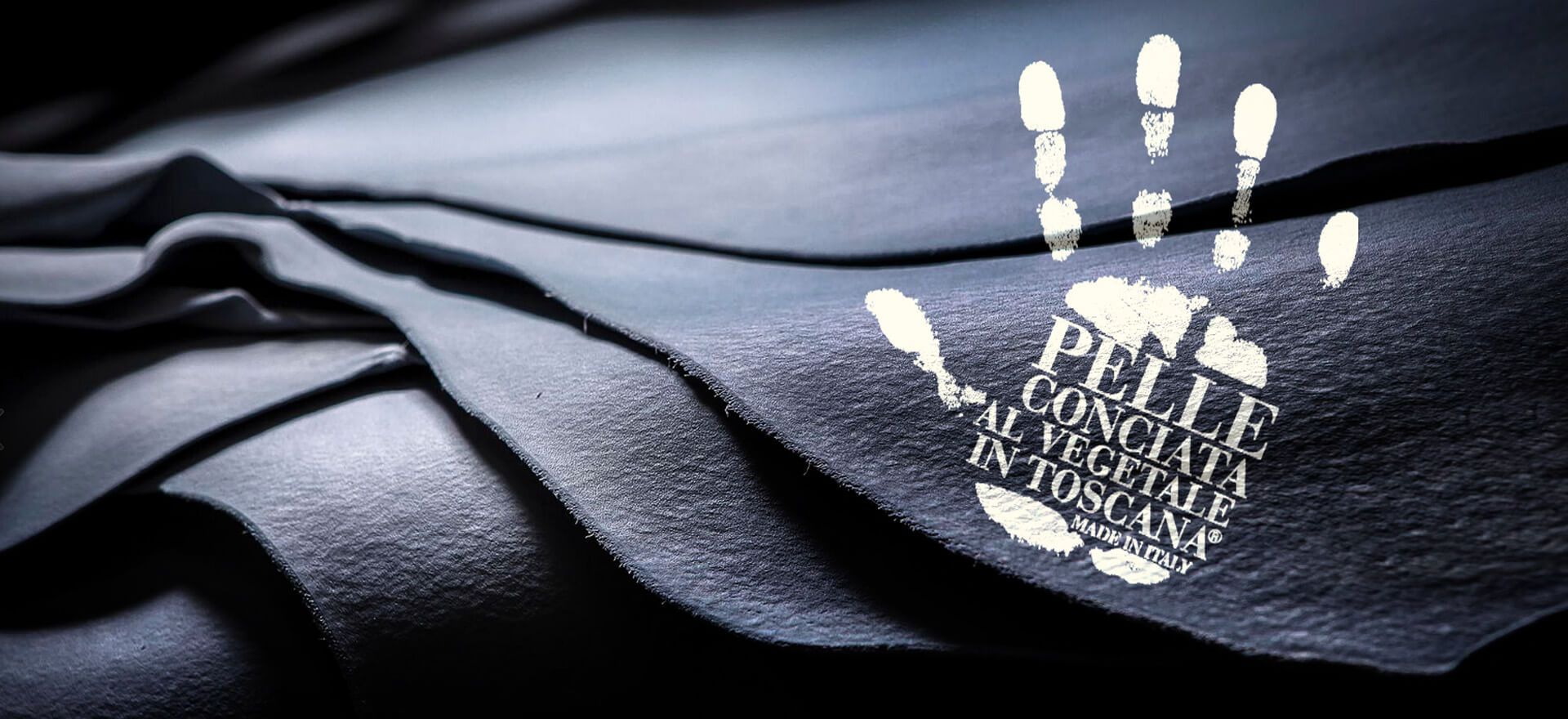Vegetable tanning has its origins in prehistoric times and in Tuscany it experienced its maximum splendor. For centuries the Tuscan master tanners have handed down the precious artisan tradition, still carrying out, with care and passion, the slow process that leads the raw hides to become leather, in total respect for nature. A process based on the use of natural tannins from trees and new technologies. In fact, it takes about 40 days to transform raw leather into an inimitable material.
The “vegetable tanning” is the most classic, traditional, recognizable, the most respectful of ecology, the most suitable for combining comfort and aesthetics, fashion and tradition.
The active ingredient tannin is found more or less concentrated in numerous types of trees and plants, and can be present both in the rind and in the leaves, in the wood or even in the fruits and roots. The smell of vegetable tanned leather is effectively combined with body odor and generates that feeling of naturalness that makes us choose from all other materials. The tannic extracts give the leathers an unmistakable warm and bright hue, as well as a greater consistency useful for making the fnal product more resistant to water and atmospheric agents.
Vegetable tanned leather ages but does not deteriorate. It is precisely the changes and customizations that occur over time and with use that testify to the naturalness of the product. Choosing a product made with this leather means owning an item that is the expression of a philosophy, a lifestyle, which is unique and unrepeatable.
No skin is the same as the other.


Vegetable tanning and the environment
Vegetable tanning is a process that comes from nature and returns to nature in full harmony. Vegetable tanned leather does not contain toxic substances – azo dyes, nickel, pentachlorophenol, chromium VI – harmful to humans and the environment and is usually well tolerated by allergic people, thanks to the absence of synthetic products and heavy metals.
It is the certainty of materials that respect our health, the result of the meeting of craftsmanship and new technology, traditions and new experiments, according to the principle of continuous improvement. To minimize the environmental impact:
- Leather for the food industry is used for vegetable tanning. No animal is killed directly for the tanning of its skins.
- Being tanned with natural tannins, a vegetable-tanned leather product can be disposed of easily, ensuring full respect for the environment.
- Most of the substances used during leather processing are recovered, processed and reused in other sectors. The salt, used to preserve the raw hides that arrive at the tannery, is recovered and used as antifreeze on the roads; the hair removed from the raw hides is transformed into fertilizer for agriculture while the sludge, coming from the purifiers, is used in the building sector for the construction of bricks;
- The vegetable tanned leather, identifiable by its brand, guarantees the absence of toxic substances, such as azo dyes, nickel or pentachlorophenol and chromium VI, which are harmful not only to humans but also to the environment.


